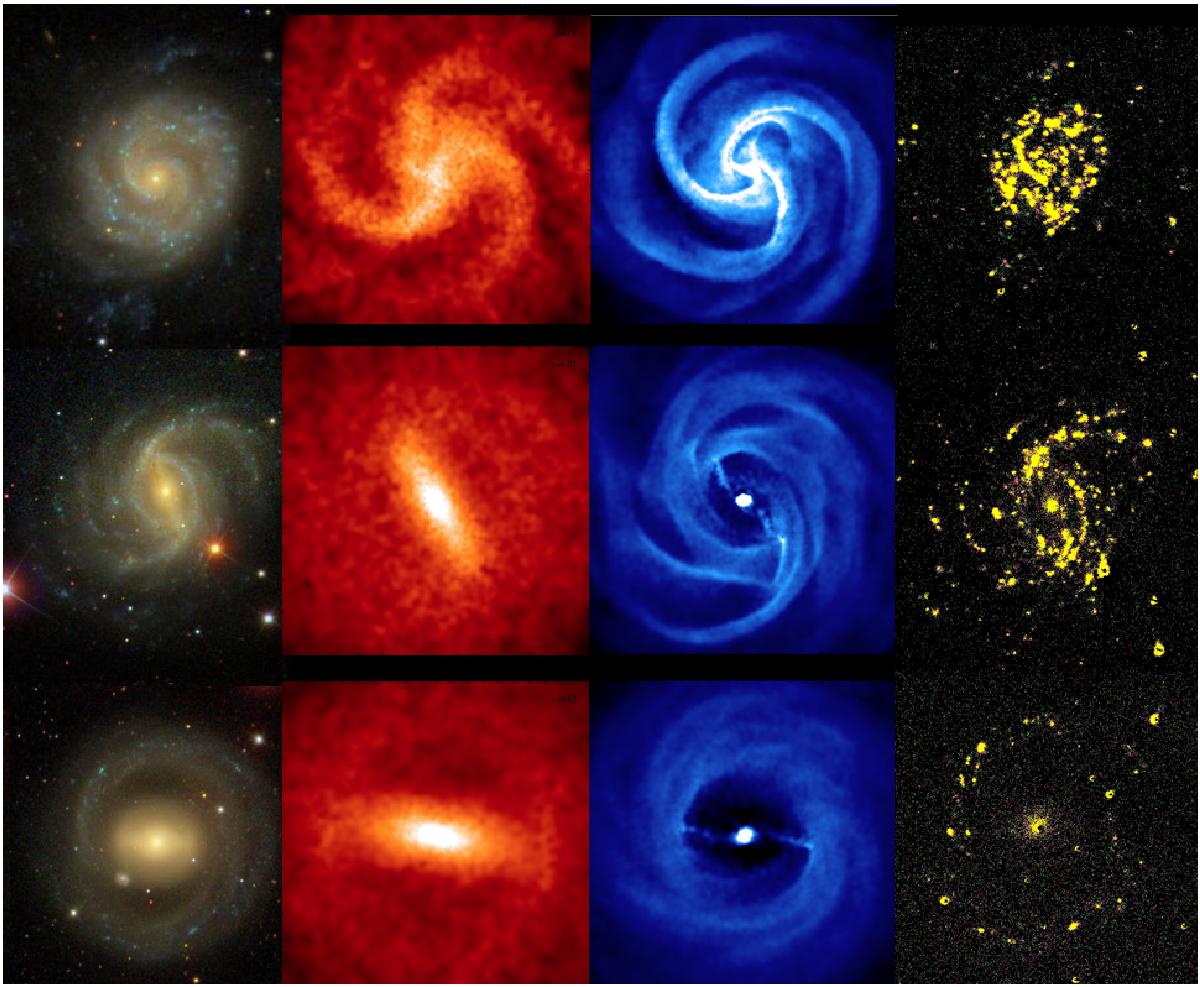Fig. 6

RGB images (SDSS) of three galaxies (left column) with increasing stellar mass (NGC 3596, NGC 5921, NGC 5701 from top to bottom) showing a regular spiral galaxy (top), a well-developed bar (middle), a barred ring (bottom). Face-on views of simulations of stars (second column) and gas densities (third column) from t = 1 to t = 4 Gyr showing a spiral disk galaxy (top) that becomes bar unstable (middle). Inside the corotation radius, the gas is conveyed towards the center and quickly consumed (except for little left along the bar). Outside the corotation radius, the gas is unperturbed and feeds peripheral star formation. At the latest time step (t = 9 Gyr) the galaxy fully develops its bar and the central region is completely evacuated of gas. A ring of gas is left outside and feeds the star formation, as confirmed by the rightmost column showing our Hα images. When the bar is well developed (the two bottom panels) the star formation is suppressed inside the bar corotation radius, but it is ongoing in the outer parts. Even centrally quenched galaxies host some emission on a nuclear scale (rightmost column). However, we caution that this emission is dominated by [NII] with respect to Hα (common in LINERs) and so does not indicate solely ongoing star formation.
Current usage metrics show cumulative count of Article Views (full-text article views including HTML views, PDF and ePub downloads, according to the available data) and Abstracts Views on Vision4Press platform.
Data correspond to usage on the plateform after 2015. The current usage metrics is available 48-96 hours after online publication and is updated daily on week days.
Initial download of the metrics may take a while.


